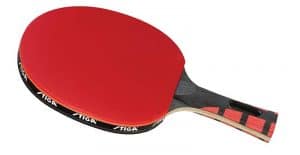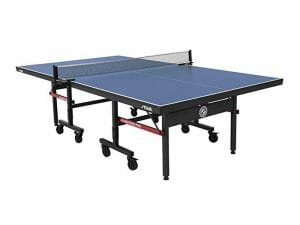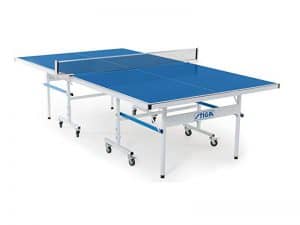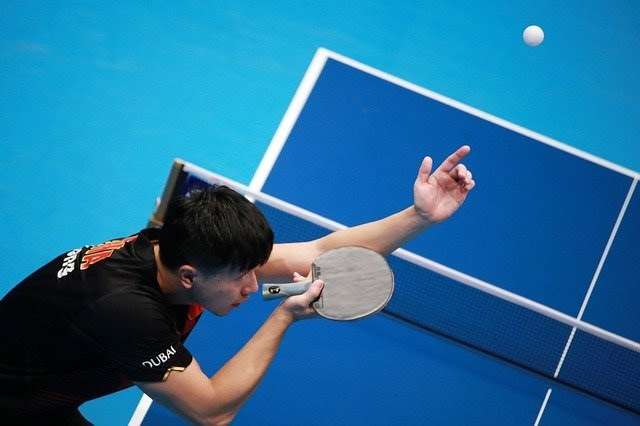Pickleball Scoring: A Clear Guide
- Alex Horscroft
- Last updated
Pickleball may be on the rise, but many people still have no idea how keeping score in pickleball works, and we can understand why. It’s a little more difficult to follow than most sports, but when explained clearly, it’s fairly easy to understand.
Pickleball scoring for singles uses two numbers, like ping pong, and doubles use three. This extra number relates to the serving order, and partners in doubles take turns to serve. For both games, you serve right to left when scoring, and the opposite when odd, and only the serving side switches positions.
But these are only the most basic pickleball scoring rules you need to understand. In this guide, we break down everything you need to know!
Format for Scoring in Pickleball Singles Play
The format of pickleball scoring depends on how many people are playing. For singles play, the scoring format should be very familiar, as it reads like many other racket sports.
It includes two numbers, the first for the serving player, and the second for the receiving player. There is no third number like there is for doubles, making it easier to track the score.
Like squash, players can only win a point on their serve, so serving consistency is everything in pickleball! Games are most commonly first to 11 points with 2 points of clearance. However, some people also play first to 15 or 21, also with 2 points of clearance.

Format for Pickleball Doubles Scoring
Doubles follow the same rules as singles except with one key difference — an additional number makes up the score. This number goes to the end and signifies the serving sequence.
It can only be 1 or 2 as the latter is how many players each team has. When service changes from one team to another, it begins at 1. It remains at this number until the serving team loses a point at which time it switches to 2, signifying the server’s partner must take their turn serving.

Pickleball Scoring Rules for Singles
The format for pickleball scoring for singles consists of just two numbers. This is because there is only one person on each side. Therefore, there is no need to track the service order between teams like in doubles.
Each player receives one guaranteed serve. If they win the point on this serve, they will continue holding the service until they lose it or commit a foul.
The server determines the serving direction, not the receiver, and it depends on whether the score is even or odd. If even, the server must serve from the right-hand side of the court to the left. And if it’s odd, it’s from the left-hand side of the court to the right.
Ensuring you serve the correct side of the court is a big deal in pickleball, as you will be penalized if you serve to the wrong side. The umpire will call a fault as soon as they spot the mistake. If the offending player won the previous point, it will be removed from the score. If more than one rally occurred, the additional points will stand.
Read More: Pickleball Rules for Singles
Scoring Pickleball for Doubles
Pickleball scoring for doubles is a little harder to keep track of than singles because of the extra rules for the additional players. But you should know that they are largely the same besides these extra rules.
Serving Sequence
Every doubles pickleball game starts with a score of 0-0-2. This signifies that the server and receiver have 0 points and that the serving team is on their second server.
Now why are they on their second server when they haven’t served yet? Good question. It’s because it’s the fairest possible way to begin a match. Having the serve is a distinct advantage because both players on a team get to serve before a side out. What’s more, the opposing team can’t win any points during this time.
Therefore, it makes sense to grant the first-serving team just one serve. After this first side out, everyone serves until they lose the point, so the third figure in the score will keep alternating between 1 and 2.
Serving Positioning
The position of the server follows the same rules as for singles play. Service begins from the right-hand side of the court to the left because the score is even. The server then switches with their partner if they win the point, and if they do not win a point, they don’t switch.
Similarly, the receiving team never switches sides. It’s only the serving team that can ever switch. One common mistake beginners make is switching places with their partners because of their original serving sequence number (1 or 2).
However, you should note that this number is not fixed. And it may differ the next time the service comes to your team. Number 1 is given to the player standing on the right-hand side of the court when the side out occurs.
Read More: Pickleball Rules for Doubles
Pickleball Scoring Examples

- 4-2-1: The serving team is leading 4 points to 2 and their first player is serving.
- 3-7-2: The serving team is trailing 7 points to 3, and their second player is serving.
- 10-11-1: The serving team is trailing 11 points to 10, and their first player is serving. Furthermore, the receiving team is not on match point even though they need a single point to win. This is because they are not serving. Therefore, they are ineligible to win points currently.
Tips on How to Keep Score in Pickleball
It’s easier than you might think to make a mistake when scoring in pickleball, and if you position yourself incorrectly, you’ll likely receive a fault. Therefore you should do your best to pay close attention to the score. These tips should help prevent you from making any mistakes.
- When a side out occurs, serve from right to left if even and left to right if odd
- The serving team only switches if they win a point
- The receiving team never switches
- Your service number may change the next time you come to serve
Another helpful tip is to make a mental note of the player who first served in a game. They should be on the right-hand side of the court when the score is even and on the left-hand side when it is odd.
This holds true throughout the game, so if this is not the case, they are either incorrectly positioned or the score was called wrong.
Need more help learning how to score pickleball? Give this video a watch!
Read More: Paddle Tennis vs Pickleball
Frequently Asked Questions
How Do You Score Pickleball?
Scoring for pickleball is commonly first to 11 points with 2 points of clearance, first to 2 games. Only the serving team can score. For singles, the score has two numbers—the serving team’s score and the receiving team’s. But for doubles, there’s a third number on the end that denotes the serving order.
What Is the Max Score in Pickleball?
The max score in pickleball depends on the setting. Most tournaments play first to 11 points (with a 2-point clearance), best of three games. However, some tournaments play the best of 5 games, and others play a single game first to 15 or 21 points. Yet, all of these games may well extend far beyond the minimum point requirement due to having a requisite for 2 points of clearance.
What Happens if You Call the Wrong Score in Pickleball?
If the wrong score is called, the referee or any player can stop play before the return of serve to correct the score. However, if the serve has been returned, the play must continue to its conclusion, when a point or fault will be awarded.
If players interrupt play before the return of serve and are correct, the score is amended. However, if they are incorrect, they lose the point. Similarly, they automatically lose the point if they interrupt play after the return of serve — even if the score is incorrect.
Conclusion
Sure, pickleball rules for scoring are a little more difficult to get your head around than most other racket sports, but it’s not rocket science. There are only a few different scoring points, some of which are not even unique to pickleball. As mentioned earlier, squash is another sport where you can only win points on your serve.
What causes more confusion is the three-number format of doubles pickleball scoring. However, it becomes pretty simple to understand when you realize that the only difference is the final number related to the serving order. Just remember that this number is not fixed so that you may serve first initially and second the next time your team serves.
Read More: Paddle Tennis vs Pickleball vs Padel
Freelance writer. Table tennis enthusiast. Lover of all things online. When I’m not working on my loop game I’m probably binge-watching some fantasy show.
-
Alex Horscrofthttps://pingpongruler.com/author/alex-horscroft/
-
Alex Horscrofthttps://pingpongruler.com/author/alex-horscroft/
-
Alex Horscrofthttps://pingpongruler.com/author/alex-horscroft/
-
Alex Horscrofthttps://pingpongruler.com/author/alex-horscroft/
Popular Products
Join our email list for exclusive reviews & the latest Ping Pong News
Sign up to our newsletter and stay up-to-date with the latest news in the ping pong world, and be the first to read our new product reviews. We promise, no spam


















